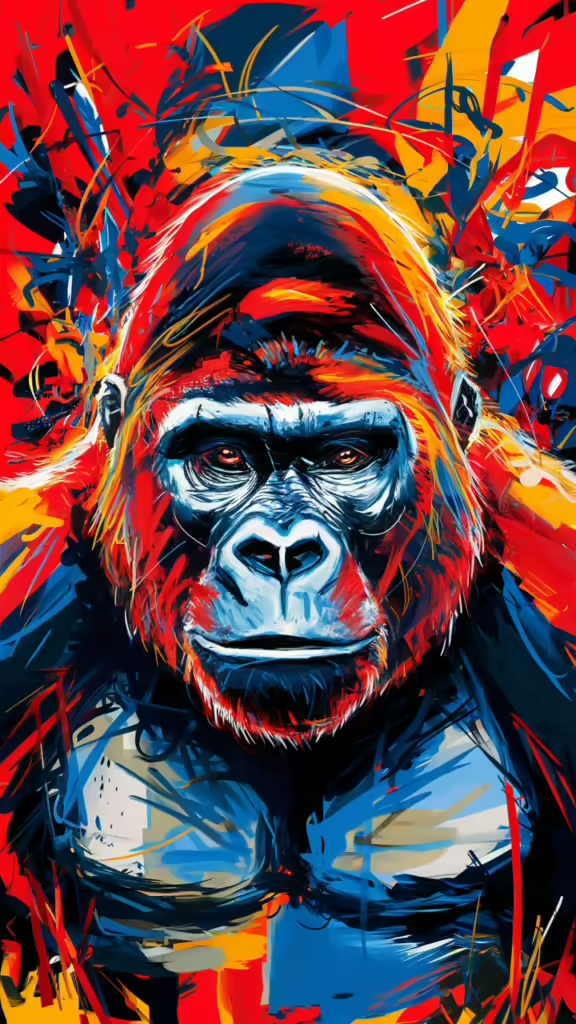
Gorillas, with their powerful presence and expressive faces, are a popular subject for artists around the world. Their deep, soulful eyes often evoke a sense of connection and empathy in viewers.
Many artists use vibrant colors and bold strokes to capture the essence of these magnificent creatures. The contrast between the gorilla’s dark fur and the bright background creates a striking visual impact.
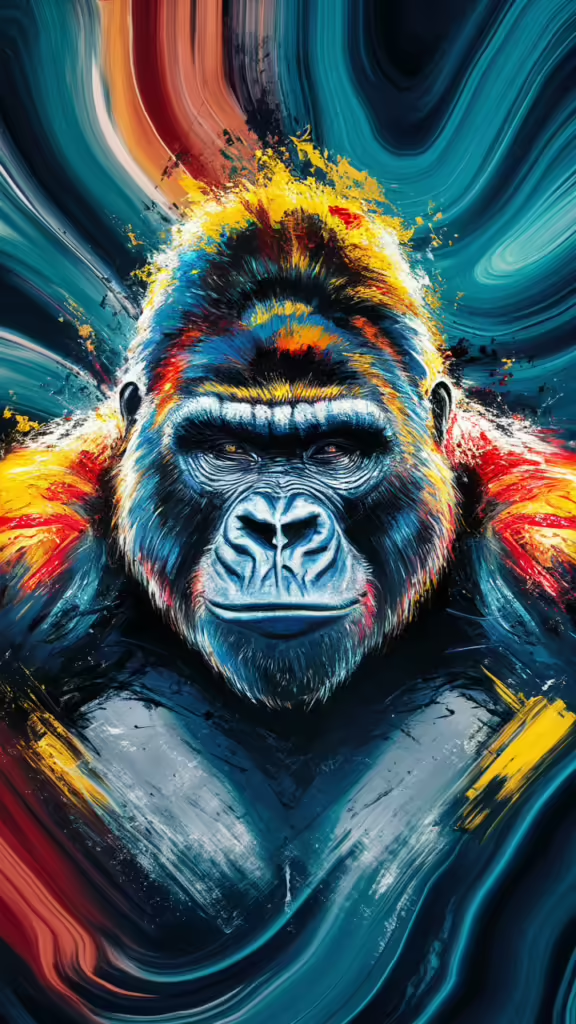
Painting gorillas can be a way to raise awareness about their endangered status. Artists often aim to highlight the beauty and vulnerability of these animals through their work.
Some paintings depict gorillas in their natural habitat, surrounded by lush greenery. This setting not only emphasizes their role in the ecosystem but also showcases the rich biodiversity of their environment.
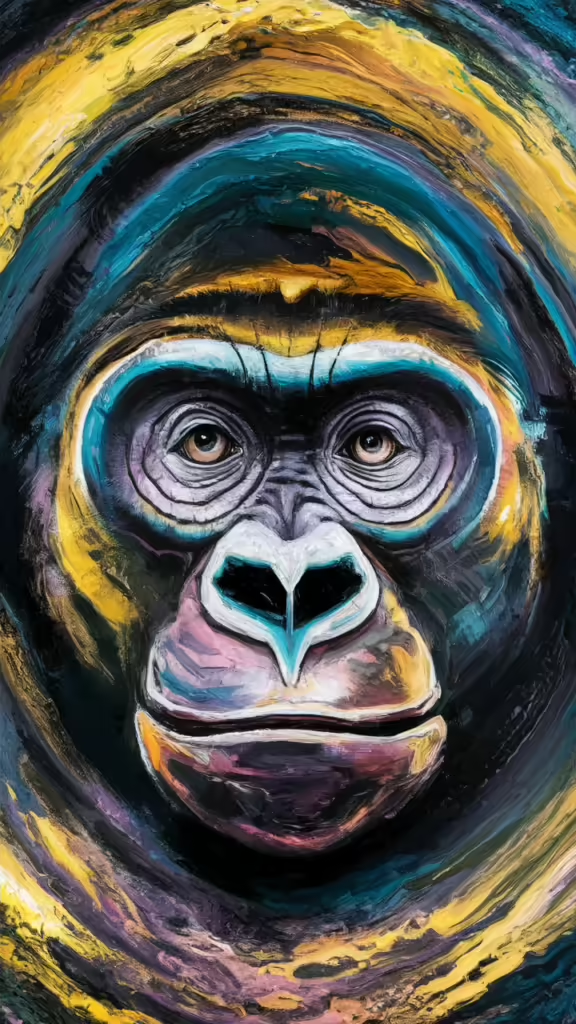
The texture of a gorilla’s fur is a challenging yet rewarding aspect to paint. Artists must master the use of light and shadow to convey the depth and realism of the fur.
In many paintings, gorillas are shown in various poses, from relaxed and contemplative to dynamic and powerful. Each pose can tell a different story about the animal’s behavior and personality.
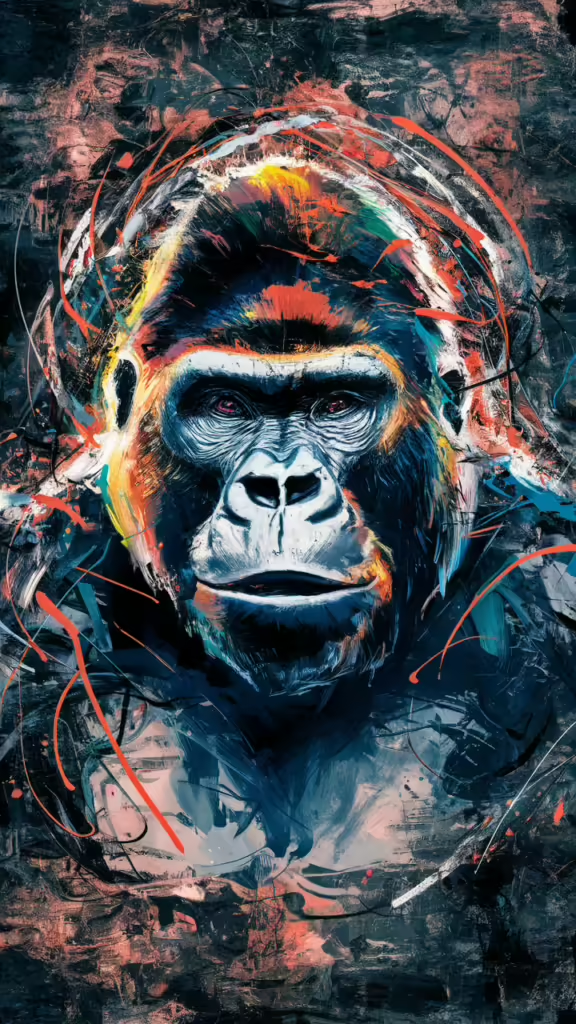
Portraits of gorillas often focus on their expressive faces, capturing a range of emotions. These close-up paintings can be incredibly powerful, drawing viewers in with the gorilla’s intense gaze.
Some artists choose to include elements of symbolism in their gorilla paintings. For example, a gorilla might be depicted holding a flower, symbolizing peace and harmony with nature.
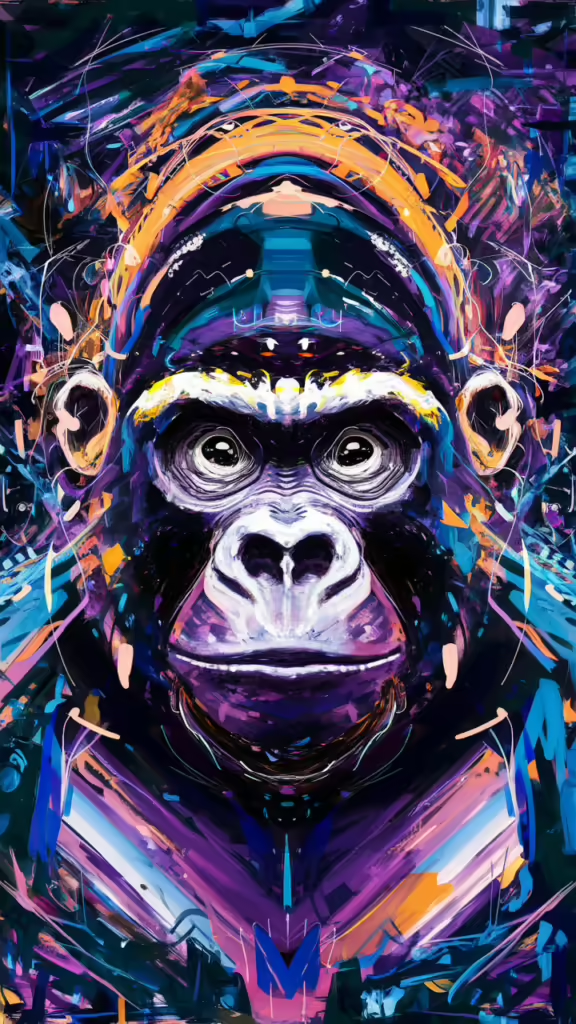
Gorilla paintings can be found in a variety of artistic styles, from realistic to abstract. Each style offers a unique interpretation of the gorilla’s form and essence.
Abstract gorilla paintings might use geometric shapes and bold colors to represent the animal’s strength and majesty. These pieces can be visually stunning and thought-provoking.

Watercolor paintings of gorillas often have a soft, ethereal quality. The fluidity of the medium can capture the gentle side of these powerful creatures.
The use of muted colors and delicate brushstrokes in watercolor paintings can create a sense of tranquility. This approach can highlight the peaceful nature of gorillas in their natural habitat.
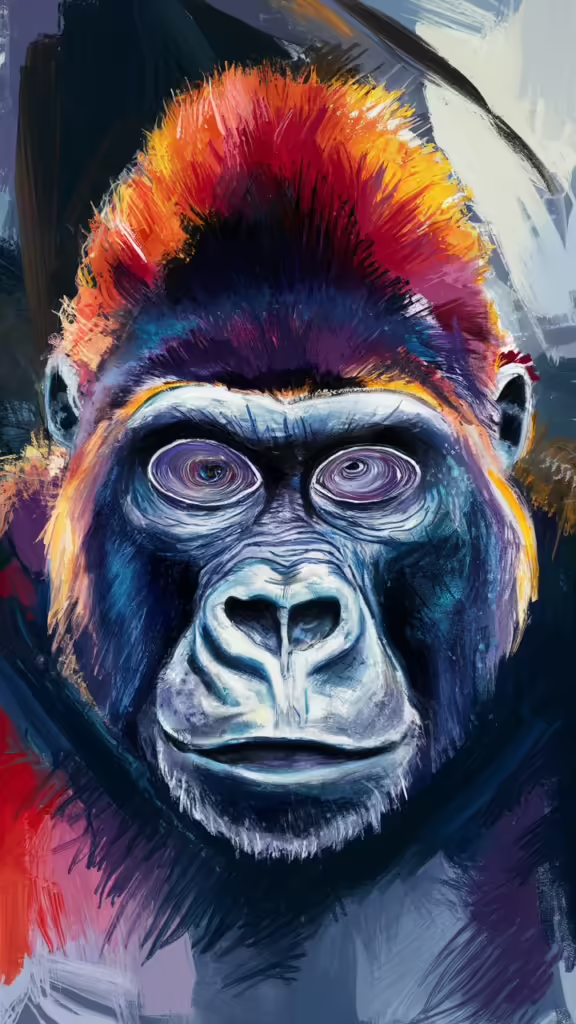
Oil paintings of gorillas are known for their rich texture and depth. The medium allows for detailed rendering of the gorilla’s fur and facial features.
Oil paints can also create a sense of realism and three-dimensionality. This can make the gorilla appear almost lifelike, as if it could step out of the painting.
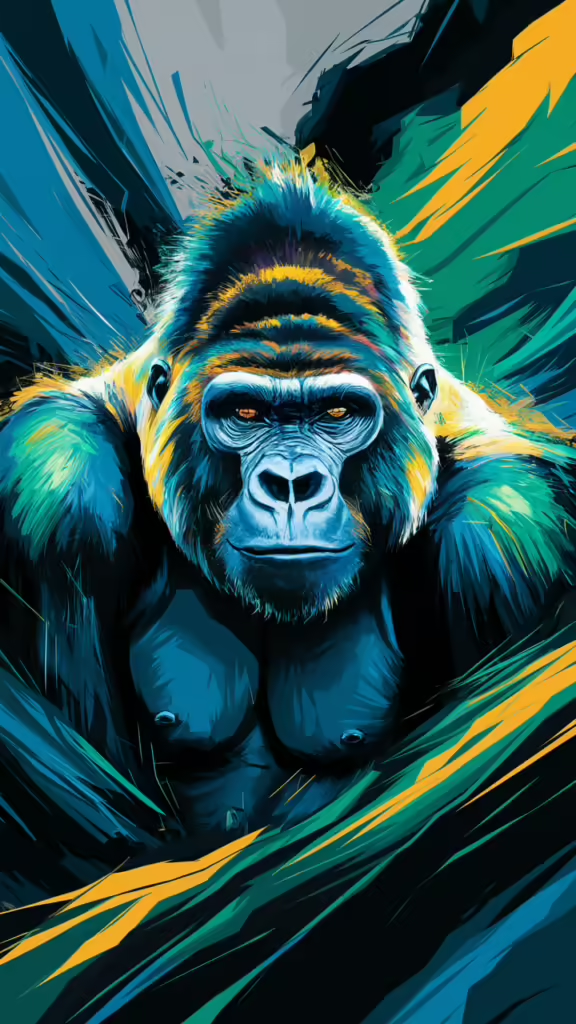
Digital art has opened up new possibilities for creating stunning gorilla paintings. Digital tools allow artists to experiment with different techniques and styles.
Many digital gorilla paintings are highly detailed and vibrant. The precision and versatility of digital art can result in incredibly realistic and dynamic images.

Some artists create mixed media gorilla paintings, combining traditional and modern techniques. This approach can result in unique and textured pieces.
By using materials such as charcoal, ink, and acrylics, artists can add layers of depth and complexity to their gorilla paintings. This can enhance the visual and emotional impact of the artwork.
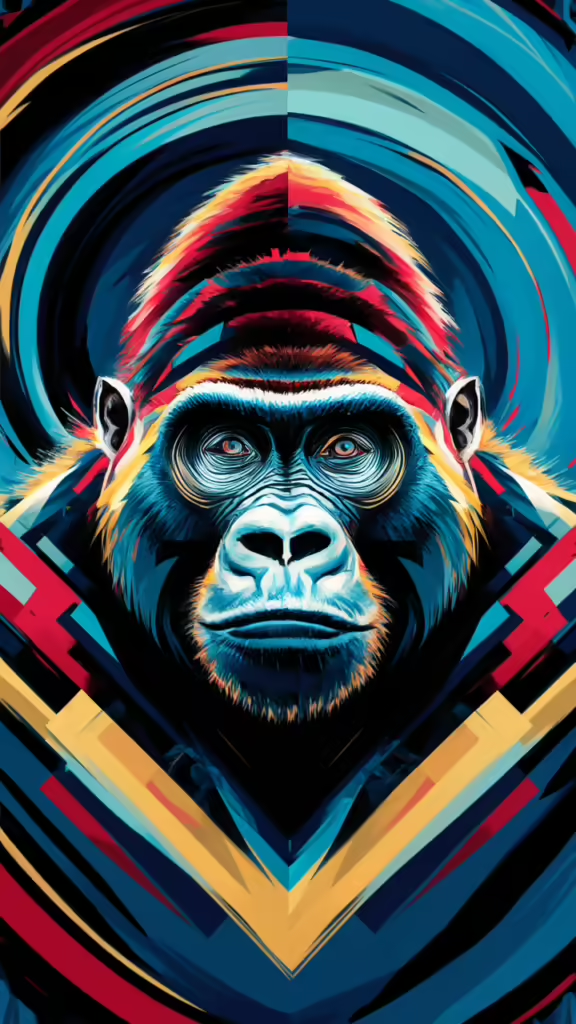
Gorilla paintings are not only beautiful but also serve an educational purpose. They can raise awareness about the importance of conservation and the need to protect these incredible animals.
Many artists are inspired by the gorilla’s strength and gentle nature. Their paintings can inspire viewers to appreciate and support wildlife conservation efforts.
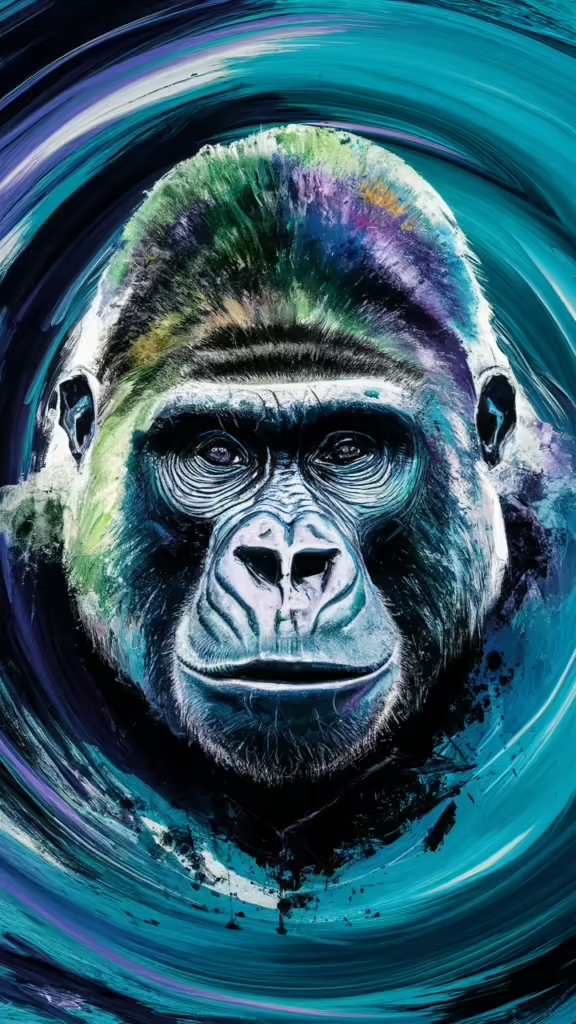
Gorilla paintings can often be found in galleries and exhibitions dedicated to wildlife art. These events provide a platform for artists to share their passion for these magnificent animals and connect with like-minded individuals.
Collectors of wildlife art often seek out gorilla paintings for their unique blend of power and grace. Owning a piece that captures the essence of a gorilla can be a source of inspiration and a reminder of the natural world’s beauty.
